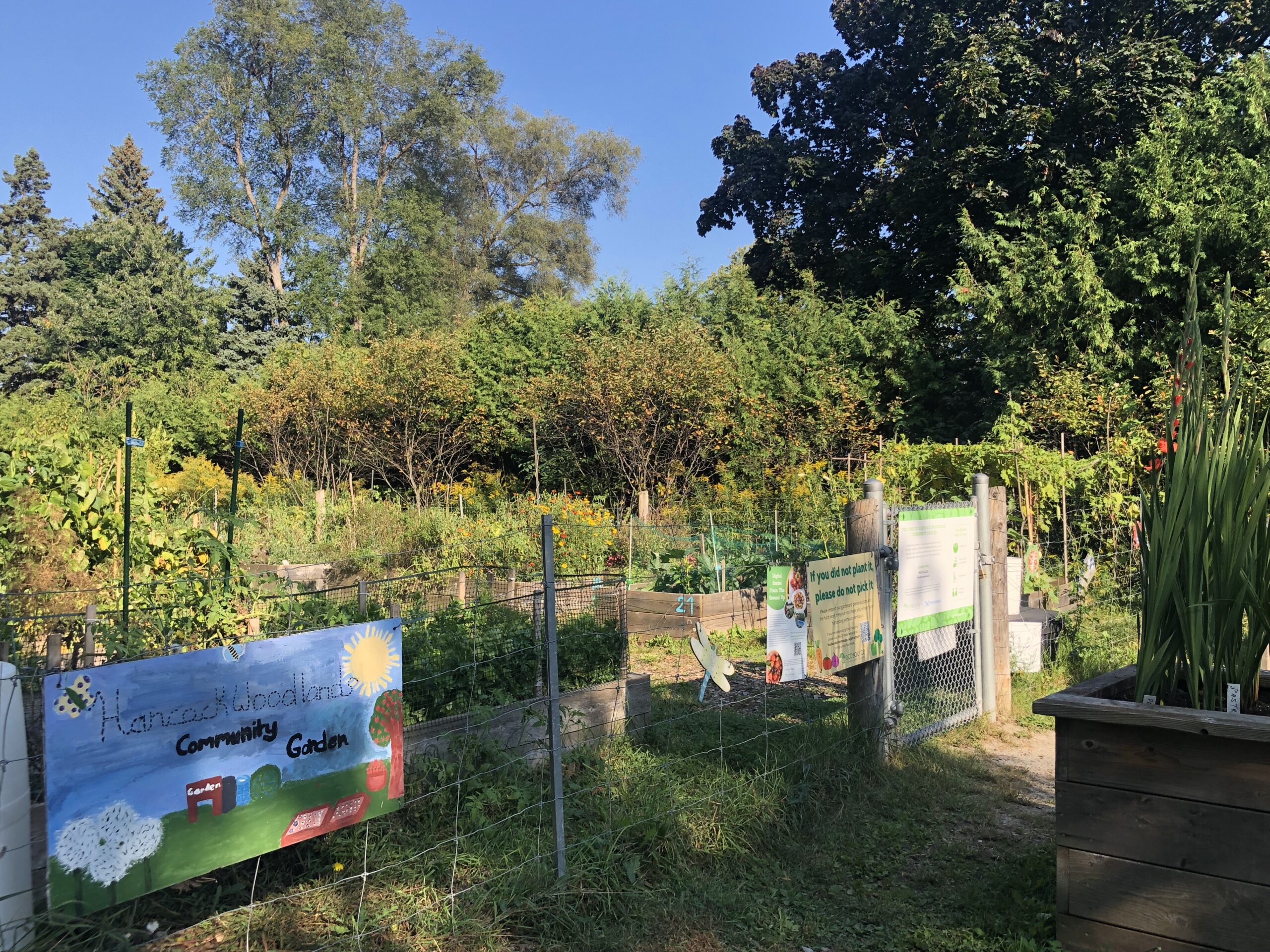Urban gardens are lush spaces of radical change
With a history of empowering marginalized communities, gardening in the city is a way to build solidarity with our bodies, neighbours, and extended communities.
My concept of urban gardening is that it’s another way to get me excited about eating my vegetables through the growth of local leafy greens. Canada Grow Supplies defines it as “the practice of growing plants in a densely populated city using modified techniques and approaches due to limited space.” But urban or community gardening is bigger than either of these definitions.
A video from Vox details how in 1960s New York City (NYC), citizens used urban gardening to build and improve their community against fiscal hardship, increasing suburbanization, and racialized policies. In the 1960s, Hattie Carthan, a resident of Bed-Stuy — a struggling neighborhood in Brooklyn — noticed that her street did not have as many trees anymore. Initially, Carthan decided to take matters into her own hands by planting trees and throwing seeds wherever she could. But soon, others joined in on her mission to revitalize a neighbourhood with local history and culture.
The local governing board did not see the value of having trees like Carthan did. She pushed through and lobbied for the city to provide a tree-matching program. She was successful. For every four trees she planted, the city would provide six. The youth of the community began to help Carthan, and her vision of a tree-lined neighborhood and streets shaded with green succeeded. Hattie’s story definitely goes against my vegetable-pushing association with urban gardening, and instead urban gardeners as stewards of local greenery and urban change.
Liz Christy, a resident of the Lower East Side neighborhood of New York, wanted to build more green spaces in the city. Left in urban ruin, with mass joblessness, increasing crime, and dwindling morale, seeds of hope are exactly what the city needed. Christy gathered her friends, neighbours, and other community members to organize the dispersal of “seed bombs” — packets of seeds that, when thrown into abandoned lots, would grow into vegetation. Transforming a destitute lot into small garden, they spent a year clearing out urban debris to build an infrastructure to support the community and by extension, uplift the neighbourhood through providing fresh produce and a third place to gather, socialize, and work. This was a small, but radical change, and thus, did not come without resistance. The City tried to stop the idea, because apparently protecting property full of trash is more important than improving it. But soon, other neighbourhoods struggling with similar problems followed suit, resulting in a local movement that was hard to ignore.
Feeling inspired? Great. You and your friends can start one too! In Mississauga, you can start a community garden by filling out a form on Eco Source’s website, which also outlines a list of nine community gardens for participants to be involved in. Toronto has 72 community gardens that residents can enjoy or contribute to, and also allows you to start a garden of your own. The UTMSU also advertises a community garden — next to the McGrath Residence, close to parking lot 10 — as part of their efforts to reduce food insecurity and empower students to have control over their food.
But Mari, how economical is this? Trust me dear reader, I researched this. The answer: I’m unsure. George Ball — chairman of the Burpee Seeds — claims it will save you $25 for every $1 you spend. This value seems excessive to me. So, I went down a Reddit thread to gain unfiltered thoughts. There were not many clear answers. But there is a strong consensus that it is worth the effort, as there are many mental and physical health benefits and the quality of the crop is significantly improved. Depending on whether you decide to start the garden on your own or use a community garden, costs might look different. So, although the economic benefits are unclear, in a world of rising inflation and dropping quality, what is there to lose?
So, is urban gardening worth it? I believe it is! Urban gardening is less about promoting the eating of leafy greens and more about building connections with nature and community, especially in neighbourhoods that receive less funding. As a student, you can use it to gain control over what you eat: this doesn’t mean growing vegetables and fruits but also something as simple as herbs that you can use to season dishes. More importantly, it builds mindfulness of the spaces we occupy. Urban gardening asks us to think of the dying or non-existent foliage around us and look after it. Our neighborhoods, backyards, and balconies are all spaces that can be filled with lush greenery meant to serve human health, and challenge the ways we conventionally interact with our urbanized environments.

